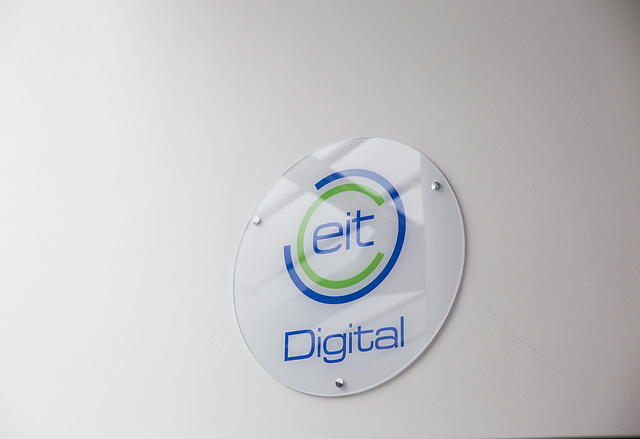Anybody who has attempted to make their life in a new country knows how hard that integration period is. You’re not just learning a new language, you’re learning new social cues, new mannerisms and new etiquette. Now imagine you are forced to do all this after fleeing from your home to arrive in a strange new place with absolutely nothing. You can’t speak the language, let alone understand social cues. Yet you are completely reliant on your hosts yet you can’t communicate with them. The refugee’s experience is a difficult one but Capiche wants to make things easier by using crowd-based AI to help refugees integrate into their new communities.
Integrating refugees is the biggest challenge facing the EU at the moment
The refugee crisis still has no end in sight. Over 1,000 people drowned crossing the Mediterranean this year alone. Visegrad group nations have consistently pushed back against allowing refugees into Europe on the grounds of security and protecting their societies. In recent months there have been similar protests from wealthy Northern European nations. There are also fears that Daesh insurgents could be lurking within the ranks of refugees, ready to carry out deadly terror attacks like those seen in Spain, Germany, France, and the United Kingdom. In the background of all this diplomatic wrangling thousands of people risk their lives crossing the Mediterranean or are trapped in southern Europe, where local government isn’t fully equipped to help them.
To say that European Governments have been paralyzed by the Refugee crisis would be an understatement. Very little progress has been made towards resolving the crisis and many individuals are trapped in a limbo with no idea when they will be able to get their lives back together. While the EU argues over the finger points of resettlement program it has fallen to local communities and private enterprise to try to find solutions.
Capiche will use a crowd-based AI to help refugees integrate even if they don’t know the local language
Often all a refugee will arrive with is a handful of belongings which if they are lucky will include some kind of smartphone. EIT Digital are hoping to leverage the ubiquity of cheap smartphones with their digital assistant Capiche. The app designed to be a smart assistant that refugees can use to navigate the confusing waters of a new country by providing a mobile translation and search service. Capiche will also include a chat bot that will allow refugees to ask questions about local services in their own language.

Capiche uses machine learning and crowd-based AI to help refugees integrate. EIT Digital attempt to bridge the gap between low quality automated translations and slow human translations by using crowd-translators. Rather than just using a service like Google Translate a refugee could request that a specific website be translated to their native tongue. The automated translator does its thing while hundreds of human translators work simultaneously to perfect the translation and improve the machine learning of the AI. In essence Capiche uses an AI guided by human hands.
EIT Digital hope that this service will allow complex web-pages to be translated in a matter of hours and instantly available to refugees. This would allow them to read local news, engage with Government offices and understand their new community. Government bodies and companies would also be able to take advantage of Capiche’s services and translate their websites to multiple languages quickly and easily.
Currently Capiche can translate into English, Farsi, German and Arabic with many more languages on the way in 2018. EIT Digital are hoping to involve refugees with their program and invite anybody with language skills to assist them by becoming a crowd-translator.
EIT will also use their Crowd-translating technique to fight fake news and extremism
Capiche will also play a role in the fight against fake news. Where as companies like Storyzy have focused on using automated blacklists EIT Digital want Capiche to utilize a Crowd-Brain system. The algorithm will be adjusted on the fly by human operators. EIT Digital are very clear that they don’t want to restrict access to content. Rather they will flag up suspect content so that users are aware to take what they are reading with a grain of salt.
They also want to use a similar process to flag up extremist content. Capiche should be able to use these warnings to help discourage refugees from accessing extremist content. Capiche will flag up content that is used by Islamic Militants to recruit new members, as well as openly racist content. Again, they will not be blocking it, simply ensuring their users are well aware of what they are looking at.
In the long term Capiche will help make the Internet a more open place
In the short term Capiche will use Crowd-based AI to help refugees integrate into their new homes. In the long term EIT Digital are hoping that their new product could revolutionize the web. They hope that Capiche can be used by individuals, Governments and companies to show their content to the wider Internet, no matter what language their audience speaks.
Currently the Internet is geared towards English speakers. When Mozilla conducted their study into Internet health that while over 1 billion people speak Chinese just 2% of the Internet is translated into Chinese. If Capiche proves to be successful at using crowd-based AI to help refugees integrate then its next step may be to help make the Internet a more inclusive place no matter what language you speak.
Capiche will be demonstrated at the first time during the DMEXCO conference in Cologne from the 13th-14th of September. Their Pilot will use the popular German refugee portal Handbook Germany.
 Tech Gadget Central Latest Tech News and Reviews
Tech Gadget Central Latest Tech News and Reviews




